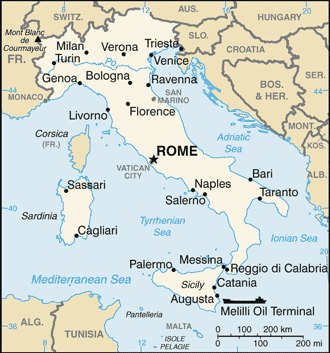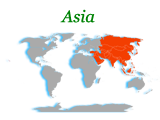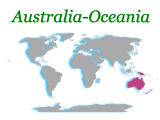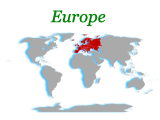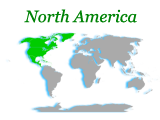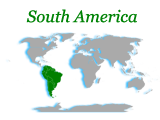Italy became a nation-state in 1861 when the regional states of the peninsula, along with Sardinia and Sicily, were united under King Victor EMMANUEL II. An era of parliamentary government came to a close in the early 1920s when Benito MUSSOLINI established a Fascist dictatorship. His alliance with Nazi Germany led to Italy's defeat in World War II. A democratic republic replaced the monarchy in 1946 and economic revival followed. Italy was a charter member of NATO and the European Economic Community (EEC). It has been at the forefront of European economic and political unification, joining the Economic and Monetary Union in 1999. Persistent problems include illegal immigration, organized crime, corruption, high unemployment, sluggish economic growth, and the low incomes and technical standards of southern Italy compared with the prosperous north.
Country Name
Conventional long form:Italian Republic
Conventional short form:Italy
Local long form:Repubblica Italiana
Local short form:Italia
Former:Kingdom of Italy
Government Type
republic
Capital
Name:Rome
Geographic coordinates:41 54 N, 12 29 E
Time difference:UTC+1 (6 hours ahead of Washington, DC during Standard Time)
daylight saving time: +1hr, begins last Sunday in March; ends last Sunday in October
Administrative divisions
15 regions (regioni, singular - regione) and 5 autonomous regions (regioni autonome, singular - regione autonoma)
regions: Abruzzo, Basilicata, Calabria, Campania, Emilia-Romagna, Lazio (Latium), Liguria, Lombardia, Marche, Molise, Piemonte (Piedmont), Puglia (Apulia), Toscana (Tuscany), Umbria, Veneto (Venetia)
autonomous regions: Friuli-Venezia Giulia; Sardegna (Sardinia); Sicilia (Sicily); Trentino-South Tyrol, also known as Trentino-Alto Adige (Italian), Trentino-Suedtirol (German); Aosta Valley, also known as Valle d'Aosta (Italian), Vallee d'Aoste (French)
Independence
17 March 1861 (Kingdom of Italy proclaimed; Italy was not finally unified until 1870)
National Holiday
Republic Day, 2 June (1946)
Constitution
passed 11 December 1947, effective 1 January 1948; amended many times
Legal system
based on civil law system; appeals treated as new trials; judicial review under certain conditions in Constitutional Court; has not accepted compulsory ICJ jurisdiction
Suffrage
18 years of age; universal (except in senatorial elections, where minimum age is 25)
Executive branch
Chief of state:President Giorgio NAPOLITANO (since 15 May 2006)
Head of government:Prime Minister Silvio BERLUSCONI (since 8 May 2008) note - in Italy the prime minister is referred to as the president of the Council of Ministers
Cabinet:Council of Ministers proposed by the prime minister and nominated by the president
(For more information visit the World Leaders website)
Elections:president elected by an electoral college consisting of both houses of parliament and 58 regional representatives for a seven-year term (no term limits); election last held on 10 May 2006 (next to be held in May 2013); prime minister appointed by the president and confirmed by parliament
Election results:Giorgio NAPOLITANO elected president on the fourth round of voting; electoral college vote - 543
Legislative branch
bicameral Parliament or Parlamento consists of the Senate or Senato della Repubblica (315 seats; members elected by proportional vote with the winning coalition in each region receiving 55% of seats from that region; members to serve five-year terms; and up to 5 senators for life appointed by the president of the Republic) and the Chamber of Deputies or Camera dei Deputati (630 seats; members elected by popular vote with the winning national coalition receiving 54% of chamber seats; members to serve five-year terms); note - it has not been clarified if each president has the power to designate up to five senators or if five is the number of senators for life who might sit in the Senate
Elections:Senate - last held on 13-14 April 2008 (next to be held in April 2013); Chamber of Deputies - last held on 13-14 April 2008 (next to be held in April 2013)
Election results:Senate - percent of vote by party - NA; seats by party - S. BERLUSCONI coalition 174 (PdL 147, LN 25, MpA 2), W. VELTRONI coalition 132 (PD 118, IdV 3), UdC 3, other 6; Chamber of Deputies - percent of vote by party - NA; seats by party - S. BERLUSCONI coalition 344 (PdL 276, LN 60, MpA 8), W. VELTRONI coalition 246 (PD 217, IdV 29), UdC 36, other 4
Judicial branch
Constitutional Court or Corte Costituzionale (composed of 15 judges: one-third appointed by the president, one-third elected by parliament, one-third elected by the ordinary and administrative Supreme Courts)
Political Parties and Leaders
Silvio BERLUSCONI coalition: Lega Nord or LN [Umberto BOSSI]; Movement for Autonomy or MpA [Raffaele LOMBARDO]; People of Freedom or PdL [Silvio BERLUSCONI]
W. VELTRONI coalition: Democratic Party or PD [Pier Luigi BERSANI]; Italy of Values or IdV [Antonio DI PIETRO]
other non-allied parties: Union of the Center or UdC [Pier Ferdinando CASINI]
Political pressure groups and leaders
manufacturers and merchants associations - Confcommercio; Confindustria; organized farm groups - Confcoltivatori; Confagricoltura; Roman Catholic Church; three major trade union confederations - Confederazione Generale Italiana del Lavoro or CGIL [Guglielmo EPIFANI] which is left wing; Confederazione Italiana dei Sindacati Lavoratori or CISL [Raffaele BONANNO], which is Roman Catholic centrist; Unione Italiana del Lavoro or UIL [Luigi ANGELETTI] which is lay centrist)
International organization participation
ADB (nonregional member), AfDB (nonregional member), Arctic Council (observer), Australia Group, BIS, BSEC (observer), CBSS (observer), CD, CDB, CE, CEI, CERN, EAPC, EBRD, EIB, EMU, ESA, EU, FAO, FATF, G-20, G-7, G-8, G-10, IADB, IAEA, IBRD, ICAO, ICC, ICCt, ICRM, IDA, IEA, IFAD, IFC, IFRCS, IHO, ILO, IMF, IMO, IMSO, Interpol, IOC, IOM, IPU, ISO, ITSO, ITU, ITUC, LAIA (observer), MIGA, MINURSO, NATO, NEA, NSG, OAS (observer), OECD, OPCW, OSCE, Paris Club, PCA, PIF (partner), Schengen Convention, SECI (observer), SICA (observer), UN, UNAMID, UNCTAD, UNESCO, UNHCR, UNIDO, UNIFIL, Union Latina, UNMOGIP, UNRWA, UNTSO, UNWTO, UPU, WCO, WFTU, WHO, WIPO, WMO, WTO, ZC
Diplomatic representation in the US
Chief of mission:Ambassador Giulio TERZI di Sant'Agata
Chancery:3000 Whitehaven Street NW, Washington, DC 20008
Telephone:[1] (202) 612-4400
FAX: [1] (202) 518-2151
Consulate(s) general:Boston, Chicago, Houston, Miami, New York, Los Angeles, Philadelphia, San Francisco
consulate(s): Detroit
Diplomatic representation from the US
Chief of mission:Ambassador David THORNE
Embassy:Via Vittorio Veneto 121, 00187-Rome
Mailing address:PSC 59, Box 100, APO AE 09624
Telephone:[39] (06) 46741
FAX:[39] (06) 488-2672, 4674-2356
consulate(s) general: Florence, Milan, Naples
Flag description
three equal vertical bands of green (hoist side), white, and red; design inspired by the French flag brought to Italy by Napoleon in 1797; colors are those of Milan (red and white) combined with the green uniform color of the Milanese civic guard
note: similar to the flag of Mexico, which is longer, uses darker shades of red and green, and has its coat of arms centered on the white band; Ireland, which is longer and is green (hoist side), white, and orange; also similar to the flag of the Cote d'Ivoire, which has the colors reversed - orange (hoist side), white, and green


